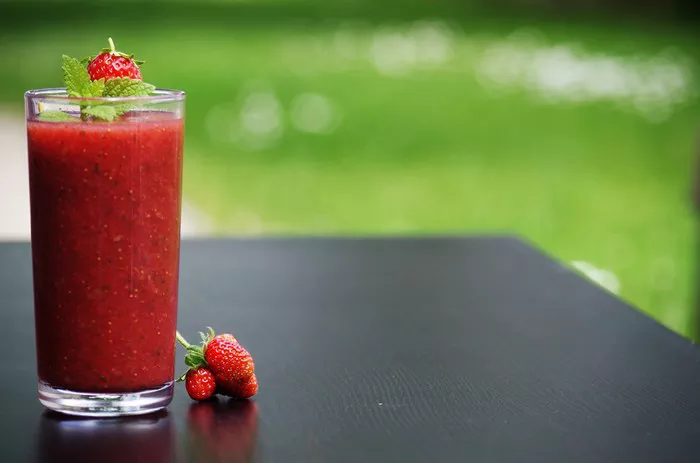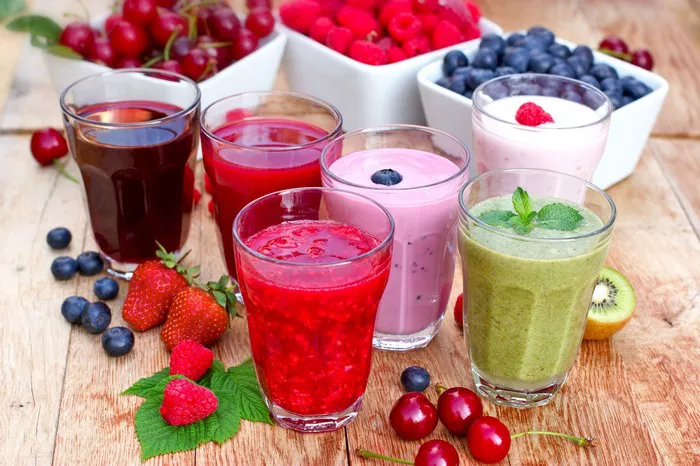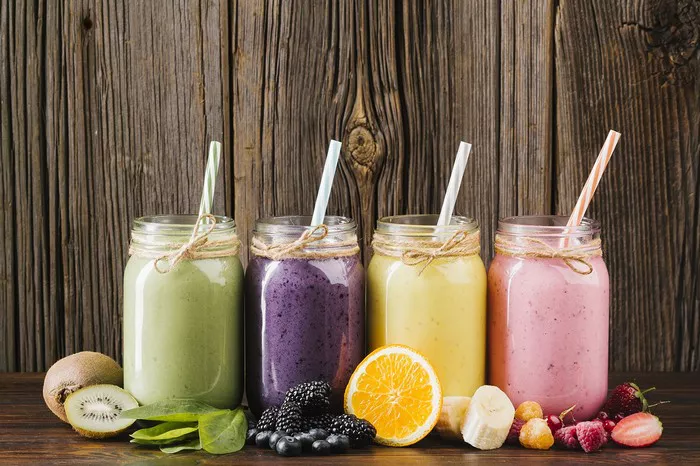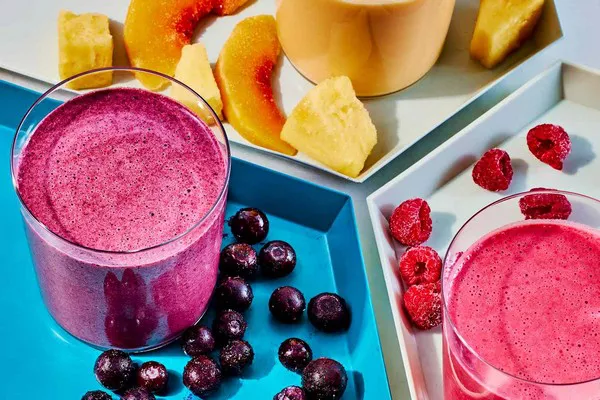In the realm of healthy eating and delicious nutrition, few things rival the versatility and nutritional prowess of a blueberry smoothie. Packed with antioxidants, vitamins, and fiber, blueberries not only add a burst of flavor but also contribute to a well-balanced diet. Whether you’re a seasoned smoothie enthusiast or just beginning your journey into the world of blended goodness, understanding how to craft the perfect blueberry smoothie is key to reaping its full benefits.
The Base: Choosing the Right Liquid
Every great smoothie starts with a liquid base that sets the tone for flavor and texture. When it comes to blueberry smoothies, several options work exceptionally well:
1. Almond Milk: Low in calories and rich in flavor, almond milk adds a creamy texture that complements the sweetness of blueberries.
2. Coconut Water: For a lighter, refreshing smoothie, coconut water provides electrolytes and a tropical hint that pairs nicely with blueberries.
3. Greek Yogurt: Adding protein and a thick consistency, Greek yogurt enhances the creaminess of the smoothie while providing probiotics for gut health.
4. Oat Milk: A dairy-free alternative that is creamy and slightly sweet, oat milk blends well with blueberries and adds a nutritional boost.
5. Orange Juice: If you prefer a tangy twist, orange juice not only adds brightness but also boosts the vitamin C content of your smoothie.
Choosing the right base depends on personal preference and dietary considerations. Experimenting with different liquids can help you find the perfect balance of flavor and nutrition for your blueberry smoothie.
The Powerhouse Ingredient: Blueberries
Blueberries are the star of any blueberry smoothie, and for good reason. These little berries are packed with antioxidants, particularly anthocyanins, which give them their vibrant color and provide numerous health benefits. Studies have shown that regular consumption of blueberries may improve heart health, brain function, and help regulate blood sugar levels.
When adding blueberries to your smoothie, consider using:
1. Fresh Blueberries: In season, fresh blueberries offer peak flavor and nutritional content.
2. Frozen Blueberries: Available year-round, frozen blueberries are convenient and help create a thick, frosty smoothie texture.
3. Wild Blueberries: Smaller in size but higher in antioxidants, wild blueberries are a nutrient-dense option for your smoothie.
Depending on the sweetness of your blueberries and personal taste preferences, you may adjust the quantity added to achieve the desired flavor profile. Approximately one cup of blueberries per smoothie is a good starting point to ensure you benefit from their nutritional richness without overpowering other ingredients.
Enhancing Flavor and Nutrition: Additional Ingredients
To elevate your blueberry smoothie from good to exceptional, consider incorporating additional ingredients that complement and enhance the flavor and nutritional value:
1. Bananas: Adding a ripe banana not only adds natural sweetness but also contributes to a creamy texture and boosts potassium levels.
2. Spinach or Kale: For a green boost without altering the flavor significantly, adding a handful of spinach or kale provides additional vitamins, minerals, and fiber.
3. Chia Seeds or Flaxseeds: These seeds are rich in omega-3 fatty acids and fiber, adding a nutty flavor and helping to thicken the smoothie.
4. Nut Butters: Whether it’s almond butter, peanut butter, or cashew butter, adding a spoonful provides healthy fats and a creamy texture.
5. Protein Powder: To increase protein content, especially beneficial for post-workout smoothies, choose a high-quality protein powder that complements the flavors in your smoothie.
Experimenting with different combinations of these ingredients allows you to tailor your blueberry smoothie to meet your specific nutritional needs and taste preferences. For example, a morning smoothie might include spinach, almond milk, and a banana for sustained energy, while an afternoon pick-me-up could feature coconut water, frozen blueberries, and chia seeds for hydration and a nutritional boost.
Balancing Nutrients: Creating a Well-Rounded Smoothie
One of the greatest advantages of smoothies is their ability to pack a variety of nutrients into a single serving. When crafting your blueberry smoothie, aim for a balance of macronutrients (carbohydrates, protein, and fats) and consider the following tips:
1. Carbohydrates: Blueberries, bananas, and other fruits provide natural sugars and fiber, essential for sustained energy levels.
SEE ALSO: What to Store Smoothies in
2. Protein: Greek yogurt, protein powder, and nut butters are excellent sources of protein that help promote muscle repair and satiety.
3. Fats: Incorporating healthy fats from sources like avocado, chia seeds, or nuts helps increase nutrient absorption and provides a feeling of fullness.
By including a variety of ingredients from each category, you can create a smoothie that not only tastes delicious but also supports overall health and well-being.
Tailoring Smoothies to Dietary Preferences
Smoothies are incredibly versatile and can be adapted to accommodate various dietary preferences and restrictions:
1. Vegan: Substitute dairy milk with almond milk, coconut water, or oat milk. Use plant-based protein powders or omit protein powder altogether.
2. Paleo: Focus on using whole, unprocessed ingredients such as fresh or frozen fruits, nuts, and seeds. Avoid dairy and grains.
3. Keto: Choose low-carb fruits like berries and incorporate high-fat ingredients such as avocado, coconut oil, or MCT oil. Limit the use of high-sugar fruits and sweeteners.
Understanding your dietary needs and preferences allows you to customize your blueberry smoothie accordingly, ensuring it aligns with your health goals while still being delicious and satisfying.
Blending Techniques: Achieving the Perfect Texture
The key to a well-blended smoothie lies in the technique. Follow these tips to achieve a smooth, creamy texture every time:
1. Layering: Place liquid ingredients at the bottom of the blender followed by soft ingredients like yogurt or spinach, then add frozen or harder ingredients like blueberries and ice on top.
2. Pulsing: Start with short pulses to break down larger ingredients, then blend continuously until smooth. Pause and scrape down the sides of the blender as needed to ensure even blending.
3. Ice: If you prefer a thicker smoothie, add a handful of ice cubes during blending. Alternatively, freeze your liquid base in ice cube trays for a creamier texture without diluting the flavor.
Experiment with blending times and techniques to find the consistency that suits your preference, whether you enjoy a thick, spoonable smoothie or a thinner, sippable drink.
The Final Touch: Presentation and Enjoyment
Once blended to perfection, pour your blueberry smoothie into a chilled glass or bowl and consider adding a final flourish:
1. Toppings: Sprinkle with granola, chopped nuts, coconut flakes, or a drizzle of honey for added texture and visual appeal.
2. Garnishes: A few fresh blueberries, mint leaves, or a slice of citrus can elevate the presentation of your smoothie.
Taking a moment to appreciate the colors and flavors of your creation enhances the overall enjoyment of your blueberry smoothie experience.
Conclusion
In conclusion, crafting the perfect blueberry smoothie is both an art and a science. By choosing high-quality ingredients, balancing nutrients, and experimenting with flavors, you can create a smoothie that not only tastes delicious but also supports your health and well-being. Whether you enjoy it as a quick breakfast, post-workout refuel, or afternoon snack, the versatility of blueberry smoothies makes them a delightful addition to any diet.
Remember, the beauty of smoothie-making lies in its adaptability. Feel free to customize recipes to suit your taste preferences and dietary needs. Whether you’re blending for yourself or sharing with others, the joy of savoring a refreshing blueberry smoothie is an experience worth indulging in regularly. Cheers to good health and happy blending!
Related Topics:



















